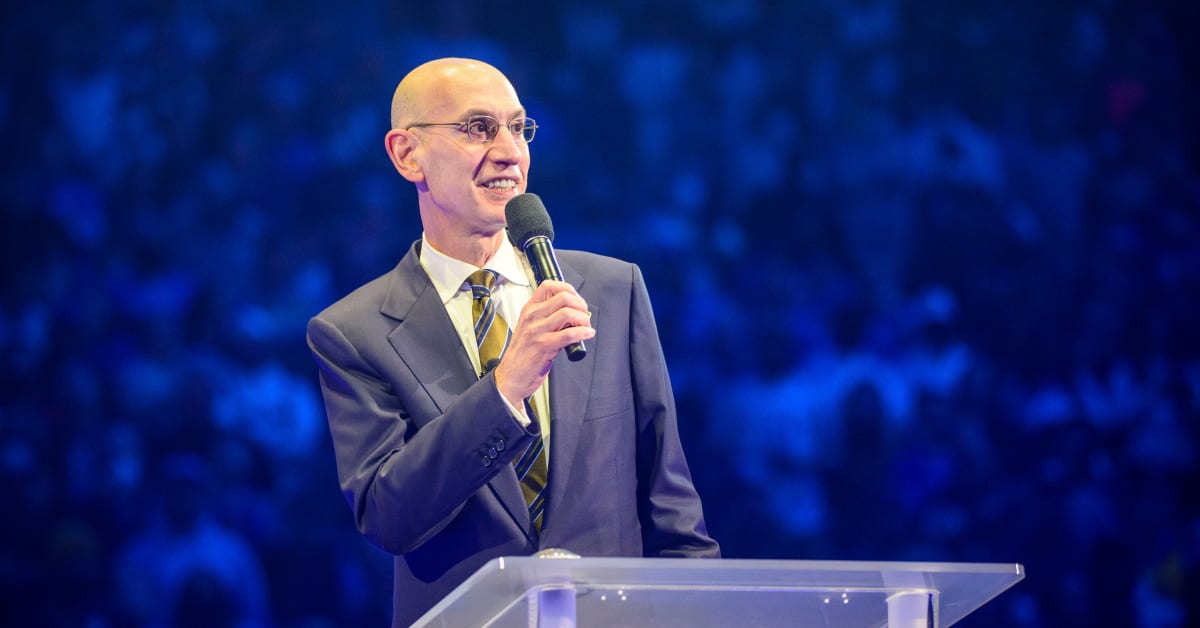
The tentative deal is expected to be ratified by league governors and players “in the coming weeks” per Wojnarowski, which will mark a significant victory for the negotiations involving the NBA and NBPA, led by new president CJ McCollum.
The CBA has a mutual opt-out after year six.
Here are some of the most important parts of the new CBA:
The NBA and NBPA were unable to come to an agreement on lowering the minimum age to enter the NBA draft.
Talks between negotiators about lowering the minimum age of American players from 19 years old to 18 years old, and allowing players to go to the NBA straight from high school, stalled.
The rule mandating players to be 19 years old during the year they’re drafted and one year removed from high school remains part of the new CBA, and wasn’t a strong enough rule for both sides of the negotiating table to use as a significant bargaining chip.
Wojnarowski notes that the league’s highest-spending teams, like the Warriors and Clippers, won’t be able to continue their luxury tax spending while still adding talent to the roster.
The league plans to curb the spending by implementing a second salary cap apron, which begins $17.5 million over the tax line. The teams that reach that tax mark will no longer have access to the taxpayer mid-level exception in free agency.
This rule would have kept the Warriors from signing Donte DiVincenzo, the Bucks from signing Joe Ingles, the Celtics from signing Danilo Gallinari and the Clippers from signing John Wall.
This rule will be eased into the salary cap over a number of years and will not be instantaneous. This rule will also help lower and middle spending teams across the league have a better chance of adding more talent to their teams in free agency.
A significant point of dissention for NBA fans has been star players sitting out due to “load management” decisions by teams across the league.
In an effort to get star players on the court more consistently throughout the season, the league is requiring that players suit up for 65 games per season in order to be eligible for All-NBA teams, MVP and more. Additionally, All-NBA teams will now be positionless.
While Wojnarowski notes that the 65 game minimum does come with some conditions, it’s a notable rule change when considering the salary implications that come along with making an All-NBA team.
All-NBA players have historically been able to sign more lucrative contract extensions with their current club, making the 65 game rule an incentivized stipulation for some of the league’s top players.
In an effort to bring even more revenue into the fold, the NBA is implementing an in-season tournament that could begin as early as next season.
The event will include pool-play games that will be a part of the regular season schedule beginning in the month of November. Eight teams will advance to a single-elimination tournament beginning in December.
The Final Four of the in-season tournament will be held at a neutral site, with Las Vegas being a favorite for the destination.
The in-season tournament would count toward the regular season standings, with the two finalists ultimately playing 83 regular season games. The winning players and coaches would earn prize money for capturing the in-season tournament crown.
The details of the in-season tournament are notable, as the regular season is still a pertinent part of the tournament structure. In addition, teams won’t be playing significantly more regular season games as a result.
The NBA and NBPA agreed to increase the upper limits on contract extensions from 120% of salary to 140% of salary. Wojnarowski notes that this would incentivize players like Boston’s Jaylen Brown to sign a contract extension with the Celtics instead of waiting for a much more lucrative deal in free agency.
Currently, Brown would be allowed to sign a four-year extension with the Celtics worth $165 million. With the new 140% extension rule, Brown could make the four-year max of $189 million, since he is scheduled to make $31.8 million in the final year of his deal with the Celtics next season.
The NBA will now allow teams to carry three players on two-way contracts to their active rosters. Two-way contracts were new to the CBA in 2017, created to help teams develop younger players. The two-way contract structure, which allows players to sign a guaranteed NBA contract and play games for both the NBA team and G-League affiliate, has seen numerous success stories since its implementation.
Wojnarowski notes that Max Strus and Duncan Robinson of the Heat, Austin Reaves and Alex Caruso with the Lakers, Anthony Lamb with the Warriors, Jose Alvarado with the Pelicans and Lu Dort with the Thunder are all examples of two-way contract success stories.
© 2024 ABG-SI LLC. SPORTS ILLUSTRATED IS A REGISTERED TRADEMARK OF ABG-SI LLC. - All Rights Reserved. The content on this site is for entertainment and educational purposes only. All betting content is intended for an audience ages 21+. All advice, including picks and predictions, is based on individual commentators’ opinions and not that of Minute Media or its related brands. All picks and predictions are suggestions only. No one should expect to make money from the picks and predictions discussed on this website. For more information, please read our Legal Disclaimer. Gambling content intended for 21+. If you or someone you know has a gambling problem, crisis counseling and referral services can be accessed by calling 1-800-GAMBLER.